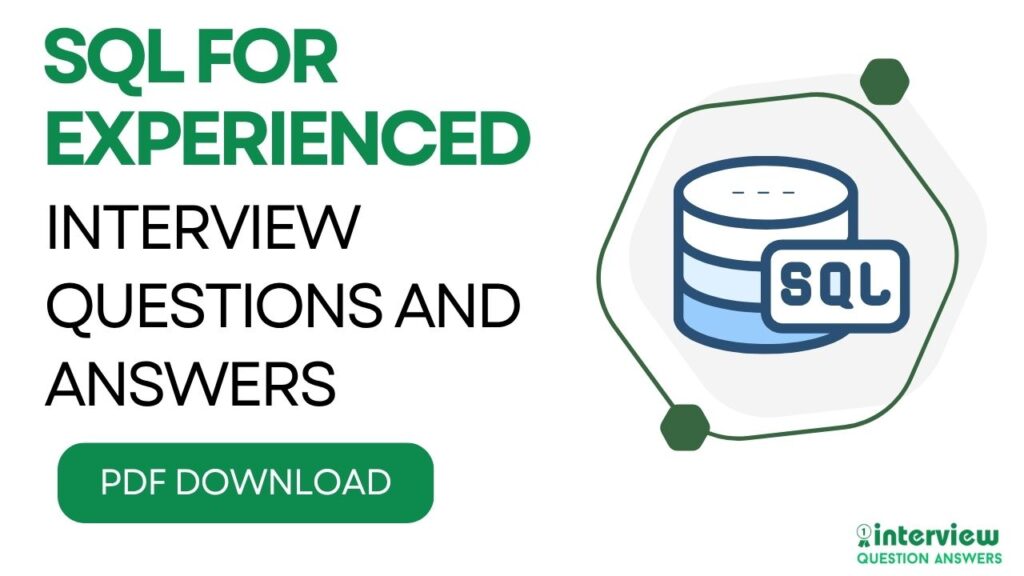Top Interview Question Answers
Your one-stop destination for preparing interview questions and answers for all kinds of job roles. From IT and technical positions to popular HR and real-world scenario questions, we provide practical Q&A sets along with easy-to-download PDFs so you can prepare both online and offline. Start your journey towards your dream job with us.

We have compiled comprehensive interview questions covering coding languages, development tools, various IT and technical job roles, and specialized technical positions. Our detailed interview guides feature the most frequently asked questions across different difficulty levels, tailored specifically to match various roles and technical specialties. Whether you’re preparing for software development, system administration, data analysis, or other technical positions, these resources will help you succeed in your next interview.
Interview Questions for Developers
- Front-End Developer Interview Questions
- Back-End Developer Interview Questions
- Full Stack Developer Interview Questions
- Software Engineer Interview Questions
- React Interview Questions
- NodeJS Interview Questions
- ExpressJS Interview Questions
- Android Developer Interview Questions
- iOS Developer Interview Questions
- Web Developer Interview Questions
- Angular interview Questions
- Spring Boot Interview Questions
- Microservices Interview Questions
IT Interview Questions
- Product Manager Interview Questions
- System Administrator Interview Questions
- Zoho Interview Questions
- Multithreading Interview Questions
- Technical Project Manager Interview Questions
- Cybersecurity Analyst Interview Questions
- IT Support Specialist Interview Questions
- Service Desk Interview Questions
- Cloud Computing Interview Questions
- Salesforce Interview Questions
- Solution Architect Interview Question
- Technical Support Engineer Interview Questions
- SOC Analyst Interview Questions
Data & AI Interview Questions
Interview Questions for Freshers
Interview Questions for Experienced
- Python Interview Questions for Experienced
- Java Interview Questions for Experienced
- SQL Interview Questions for Experienced
- PHP Interview Questions for Experienced
- Data Analyst Interview Questions for Experienced
- Data Scientist Interview Questions for Experienced
- Business Analyst Interview Questions for Experienced
API and Automation Interview Guides
We have already provided interview questions and answers to help you succeed, the interview is just one crucial step in your job search journey. The complete job acquisition process involves four key phases: finding the perfect job opportunity, crafting compelling job applications, mastering the interview process, and securing your desired position. Let’s explore each stage of this complete career journey to maximize your chances of landing your dream job in the tech industry.
Finding the Perfect Job Opportunity
The foundation of a successful job search begins with identifying roles that align with your skills, career goals, and values. Start by analyzing job market trends in your specific field.
- Leverage multiple job platforms: Utilize LinkedIn Jobs, Indeed, Glassdoor, AngelList, and industry-specific sites like Stack Overflow Jobs or GitHub Jobs
- Company research: Create a target list of 20-50 companies that match your career aspirations and company culture preferences
- Network strategically: Attend tech meetups, conferences, and online communities to discover hidden job opportunities
- Set up job alerts: Configure notifications for specific keywords, locations, and salary ranges to stay ahead of new postings
- Explore startup ecosystems: Consider emerging companies that offer growth opportunities and equity potential
Carefully analyze job descriptions to identify must-have skills versus nice-to-have qualifications. Focus on roles where you meet 80-90% of the requirements, as companies often list ideal candidates rather than minimum qualifications.


Apply for Job Applications
Your resume serves as your first impression and must pass both Applicant Tracking Systems (ATS) and human recruiters. A well-optimized tech resume significantly increases your chances of landing interviews.
- Professional summary: Write a compelling 2-3 line summary highlighting your experience, key skills, and career objectives
- Technical skills section: List programming languages, frameworks, tools, and technologies relevant to your target role
- Project showcases: Include 2-3 significant projects with quantifiable results and technologies used
- Experience descriptions: Use action verbs and metrics to demonstrate impact.
- Education and certifications: Highlight relevant degrees, bootcamps, and professional certifications
While many tech roles don’t require cover letters, submitting one can differentiate you from other candidates. Keep it concise, personalized, and focused on how you can solve the company’s specific challenges.
Prepare for an Interview
Preparation extends beyond technical knowledge. Successful candidates demonstrate strong communication skills, cultural fit, and genuine enthusiasm for the role.
- Understand the Job Role: Carefully read the job description to know what skills and experience the employer is looking for.
- Research the Company: Learn about the company’s products, services, work culture, and latest updates to show genuine interest.
- Review Common Interview Questions: Practice answering popular questions related to your field, both technical and behavioral.
- Prepare Real-Life Examples: Think of past work situations where you solved problems, worked in a team, or handled challenges.
- Know Your Resume Well: Be ready to explain your skills, experience, and achievements mentioned in your resume.
- Work on Communication Skills: Practice speaking clearly and confidently. Avoid using jargon unless necessary.
Receiving a job offer is exciting, but the negotiation phase determines your long-term career satisfaction and financial growth. Approach negotiations professionally and be prepared to discuss multiple aspects of compensation.







